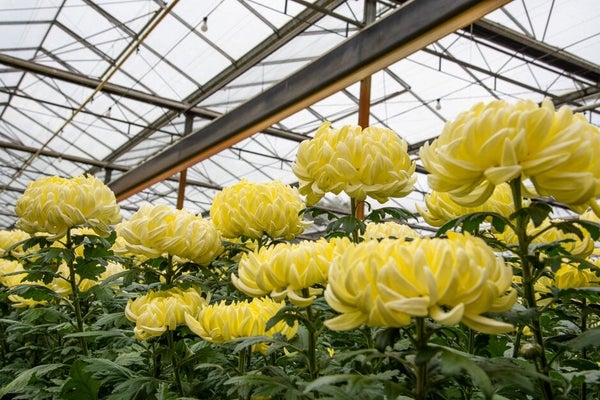
Quick facts
Plants respond to external stimuli, like gravity, light and temperature, to give them the best chance of survival
They react to these stimuli by producing chemical and hormonal signals that affect how they grow, adapt and reproduce
Flowering is controlled by day length and temperature – gardeners can manipulate growing conditions to trigger or prevent flowering
How plants respond to light
Most plants grow and bend towards the light, especially sun-loving species. The ability of plants to grow towards a light source is called phototropism (from the Greek photo, meaning light, and tropos meaning turn).

When a seedling is lit from above, it will grow straight upwards as the cells in its stem lengthen equally.

When light comes from one side, a seedling will bend in that direction. This is because auxin, the hormone responsible for cell elongation, accumulates on the shaded side of a stem, causing it to grow faster than the sunward side.
Light intensity affects the concentration of another hormone, gibberellin, which is responsible for controlling the length of stem between leaves (internode length):

In good light, plants remain compact with short internodes, as there is sufficient light reaching their leaves.

In low light levels, plants can become tall and spindly – or etiolated – as internodes become longer than normal. If you see a plant 'stretching' to try and better reach the light, move it to a sunnier position.
Plants that are naturally adapted to growing in shade don’t have such a strong phototropic response. If you have a shady spot in the garden, such as under a tree canopy, select plants that will perform well there. In shady rooms indoors, opt for houseplants that originate from shady forests, such as aspidistras and ferns.
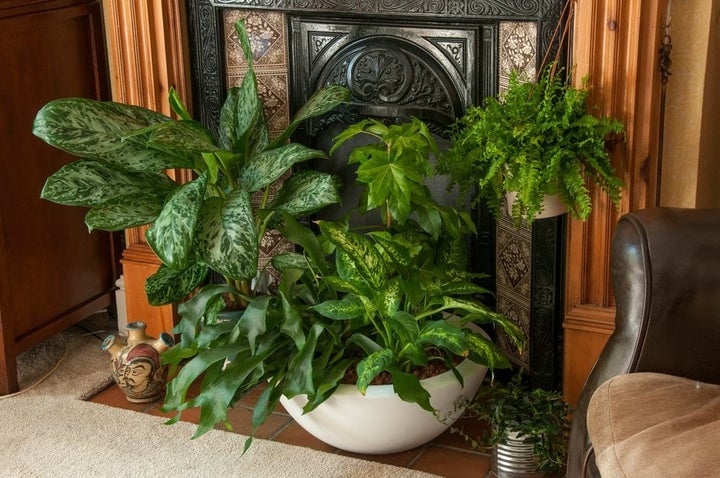
How plants respond to day length
Some plants are sensitive to different lengths of the day or night, a response known as photoperiodism. Plants use this ability to help them adapt to seasonal changes in their environment and ensure key points in their lifecycle, such as flowering and leaf fall, take place at the right time.
- Short-day plants bloom when nights are getting longer and there are fewer daylight hours. Autumn-flowering chrysanthemums are a classic example. Although they’re known as short-day plants, it’s primarily the longer periods of darkness that trigger their flower buds to form
- Long-day plants naturally flower in summer – the hardy annual love-in-a-mist (Nigella) is an example
- Day-length neutral plants aren’t triggered into flowering by the length of day or night. Tomatoes are one example – if you sow them in early spring, the first flowers develop early too
It can be difficult to distinguish day-length neutral plants as there’s often a complex interplay of several factors, including day length, temperature and/or light intensity, affecting flowering time.
Did you know?
Commercial growers produce cut-flower chrysanthemums all year round by using a little trickery. To encourage them to flower earlier, in summer, they use blackout fabric to artificially lengthen the night, mimicking autumn. Conversely, they shorten long nights with artificial lighting to encourage flower buds to form in winter.
How plants respond to gravity
The ability of plants to respond to gravity is called geotropism (from the Greek geo, meaning earth, and tropos meaning turn).

Roots are positively geotropic - they grow downwards, with gravity, into the soil. In a root growing horizontally, auxin accumulates on the lower side. The lesser amount in the upper cells causes these to grow faster, curving the root downwards into the soil.

Stems are negatively geotropic - they grow upwards, against gravity, away from the ground. If you peg a stem down flat, it will bend upwards at the tip and start growing vertically. This is because auxin becomes more concentrated on the underside of the horizontal stem than the topside, making it grow more quickly and curving it up towards the light.

Different plant parts have other geotropisms. Rhizomes, such as those of bearded irises (left) and bamboo, grow horizontally, while side-shoots on a stem grow outwards at an angle.
Even the tiny, embryonic stem (plumule) and root (radicle) of a seedling can sense gravity, and will quickly orientate themselves after germination. This means it's not a deal breaker if you sow seeds or plant bulbs the wrong way up.
How plants respond to touch
The ability of plants to respond to touch is called thigmotropism (from the Greek thigma, meaning touch and tropos meaning turn).
Commonly seen examples of this response include:
- Tendrils grasping a support by curling around it – contact with the support stimulates a migration of auxin and causes cells on the outside edge of the tendril to grow faster than those touching the object
- Roots growing away from solid objects – they are negatively thigmotropic – so they choose the path of least resistance through the soil
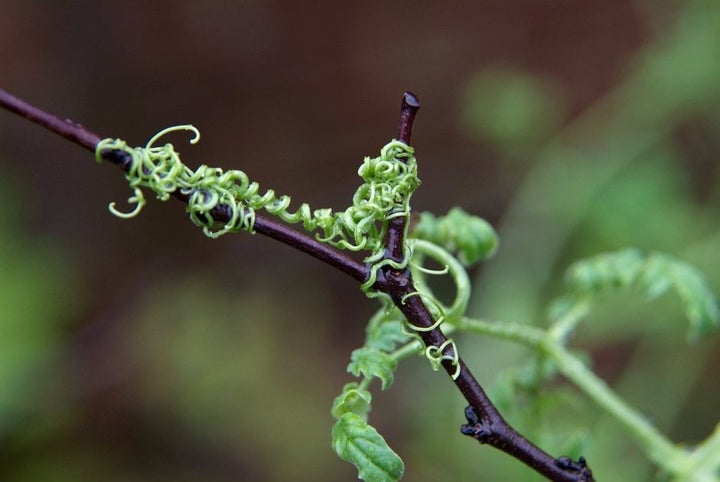
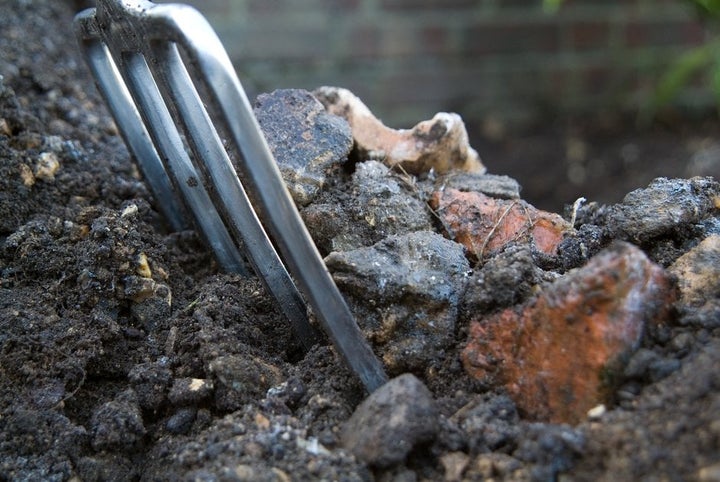
Plants may also respond to movement such as handling and brushing – known as thigmomorphogenesis. Plants that are physically disturbed produce more ethylene, which reduces stem elongation, resulting in stockier, more compact plants. Different species respond to varying degrees, but many young bedding plants, including pansies, are said to be especially responsive.
Outdoors, a strong breeze can stimulate this response. Plants grown in exposed locations stay short and sturdy so they are less at risk of wind damage. When you plant a young tree , be sure to give it a short stake so that it can flex in the wind and respond to its environment.
Did you know?
Tree stakes should ideally be attached at around one third of the height of the trunk. The stake's role is not to keep the trunk rigidly erect, but instead to stop the rootball moving in the ground so it can develop as an anchor. See our guide to staking new trees.

How plants respond to cold
Cold temperatures can trigger flower bud development, especially in biennial plants such as honesty (Lunaria). Biennials spend their first year making a rosette of leaves, then flower once they have recieved enough chilly days. The period of cold needed varies from species to species, but most flower in late spring.
With many bulbs, flower buds develop inside the bulb in warm temperatures, but it’s only after a period of subsequent cold that the flower stem emerges from the bulb. Knowing this, we can ‘force’ spring bulbs, such as hyacinths, to flower earlier by chilling them for a specific period in September or October – see our guide to forcing bulbs for Christmas .
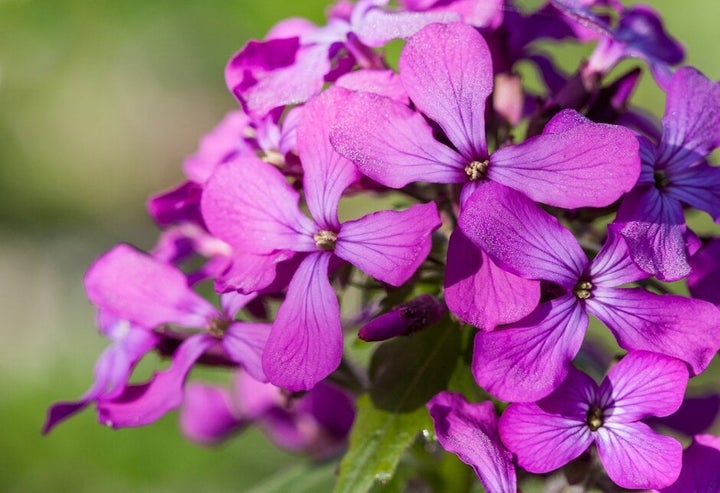
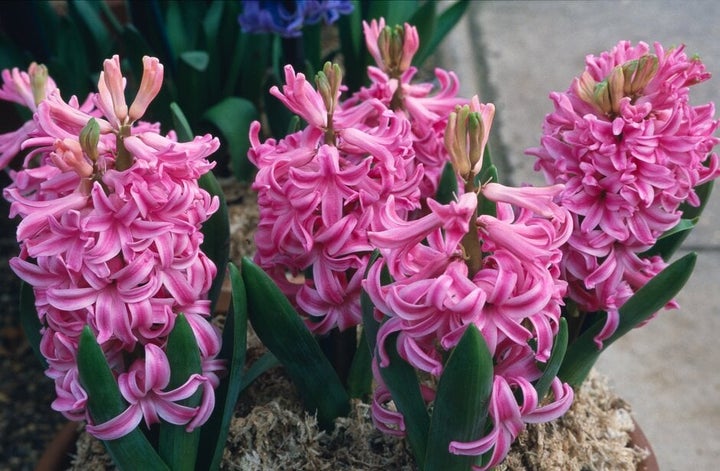
Unseasonally low temperatures (and/or day length) can also cause premature flowering – bolting – which affects the quality of root crops and salads. Newly sown beetroot, for example, often bolts if temperatures fluctuate in spring. Once plants are triggered by low temperatures and turn their energy to flowering and setting seed, their roots stop swelling and this gives us a poor crop.
Did you know?
In most parts of the UK, it’s best not to be over-eager and sow veg and salads if there’s a mild spell in late winter. Colder temperatures are still likely to follow and this could make your veg bolt. In general, it's much safer to sow in April when temperatures are likely to rise steadily.
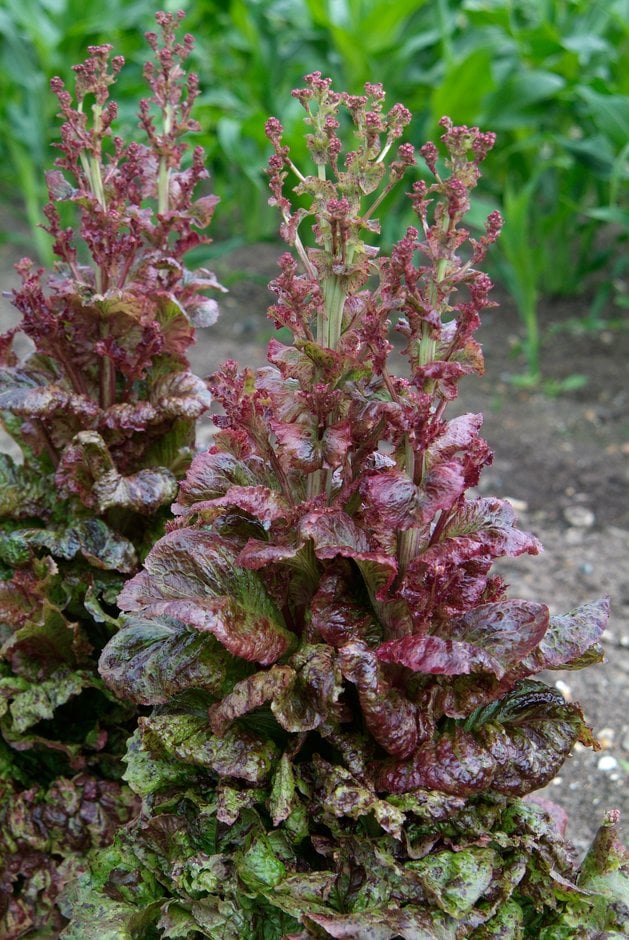
Your next steps
Now you know more about how plants feel and sense, put this into practice to help your plants thrive:
- Try to provide all-round light for seedlings on windowsills indoors – turn seed trays regularly or consider adding simple grow lights. See our guide to artificial lighting
- Give climbing plants with tendrils the support of canes and wires. Tie them on to start with, giving them contact, and they’ll respond by wrapping their tendrils around to hold on themselves
- Use short stakes on newly planted trees
- Avoid sowing most veg when cold weather is still likely – crops such as beetroot and Swiss c hard may bolt
- Force spring bulbs for an early indoor display. Put pots of bulbs in a cool dark place, at around 12°C (54°F), for six to ten weeks (depending on the type of bulb), before bringing them into a warmer location to flower







